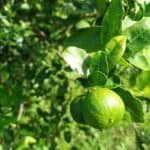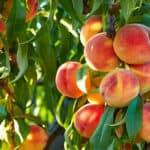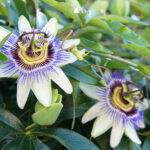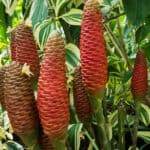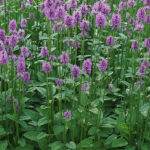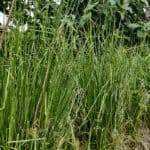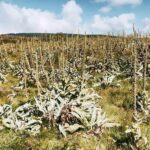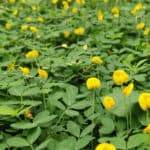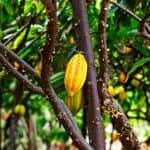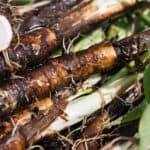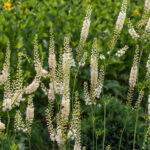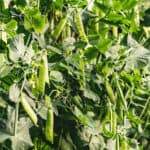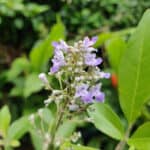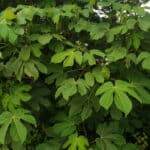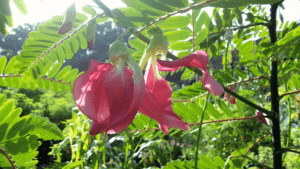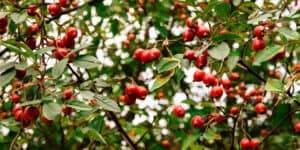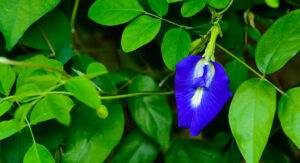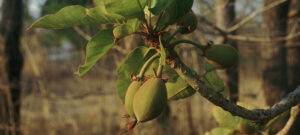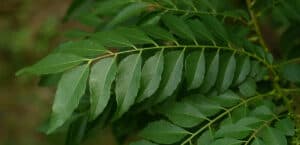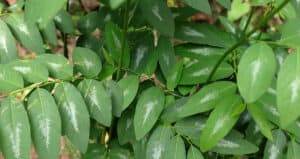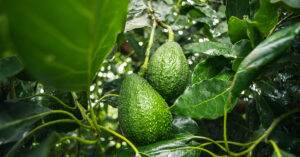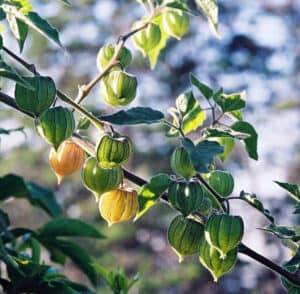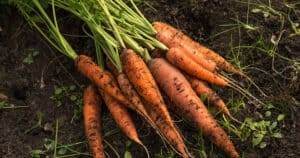Walking along the forest trail, under dappled shade, and atop damp soils, you might find the lovely lemon balm. Growing amongst the understory foliage or along the forest edge, she bears distinct Lamiaceae, or mint family traits, including a square stem and opposite leaves. Rub her darkly-veined leaves between your fingers and delight in her lemony aroma. If you feel so inclined (and know for a fact it is indeed lemon balm), you might pick a leaf and place it on your tongue. Embrace her powerful and pleasant flavor as you connect to the plant, and the surrounding forest, through the taste of her fresh leaf.
Plant Overview
Lemon balm is a small herbaceous perennial native to the Middle East and the Mediterranean regions. It is now naturalized throughout the world, as its treasured medicine has been carried along and ferried by travelers. Although it isn’t too picky about its terrain, I have found it to be most abundant on forest edges with rich, damp, and fertile soil.
Its scientific name, Melissa officinalis, lends insight into Lemon Balm’s fascinating history. Melissa is the greek word for honeybee, as bees seem to be enchanted by the smell and presence of this herb. Lemon balm was traditionally placed around bee hives to discourage swarming, and it was believed that bees wouldn’t leave their hive if lemon balm grew nearby. It may also encourage new swarms to move into an empty hive.
Interestingly, the scent of lemon balm may discourage bees from stinging, and a fresh poultice of the leaves is a wonderful remedy for bee stings. Bees and lemon balm have an interesting relationship, and there is much to be explored in the symbology of this relationship and the benefits it can bring to a garden.
Officinalis refers to lemon balm’s status as the official medicinal plant of its species. It speaks to this herb’s rich history of medicinal use throughout many cultures and regions.
Description and Identification
Lemon balm’s growth and description somewhat depend on the climate, soil conditions, and sun exposure. In general, it grows about 1 to 2 feet tall and may form dense colonies as it spreads. Its simple, shovel-shaped, scalloped leaves can grow large under the forest canopy, where it receives partial to dappled shade. These leaves are also softer and light green.
Lemon balm growing under full sun and less fertile soil bear smaller leaves that are darker in color. It also doesn’t grow as tall as the forest-grown lemon balm and tends to bush out more. In either case, the leaves grow smaller farther up along the stem.
It forms small bilabiate (two-lipped) white flowers that whorl around the stem. The flowers are less distinguishable and are easily lost among the dark green foliage. Full-sun/cultivated lemon balm flowers earlier than wild, forest-grown lemon balm.
While lemon balm closely resembles many of its mint family cousins, it does have a few distinct characteristics that help set it apart. For starters, few other mint family members have that particular lemon scent. Plants that do have a lemony scent, such as lemon basil, lemon thyme, and lemon bee balm, are easily set apart from lemon balm as they do not bear distinctly scalloped and deeply-veined leaves.
Propagation and Planting
Lemon balm is one of the easiest medicinal plants to grow. If you want to start it from seed, a two-week stratification period will increase germination rates. While stratification isn’t necessary for lemon balm to germinate, you’ll have more success and faster germination if you do. Some growers also recommend scarifying the seeds before stratifying.
I’ve started lemon balm from seed and stratified it in damp sand in the fridge for two weeks. I didn’t scarify it beforehand, and I had incredible germination rates. I planted more seeds to account for poor germination and ended up with more lemon balm seedlings than I knew what to do with!
You can also sow lemon balm directly in the garden in early spring, and the early spring temperatures will provide the stratification period.
Sow the seeds on the surface and barely cover them with soil. Lemon balm is a light-dependent germinator, so it needs direct light to germinate. Germination takes about 5 to 14 days, depending on the method you choose. Thin or transplant seedlings to 2 feet apart if growing in full sun, as the plants will bush out substantially. If planting under partial shade, you can space seedlings 1 to 2 feet apart.
Lemon balm can also be propagated through root divisions in early spring or early fall. Cut half of the foliage if present, as having too much above-ground growth can cause the division to fail due to excess water loss.
Growth and Care
Lemon balm is a resilient little herb that will tolerate a variety of soil types. It can grow in zones 3-10 and prefers moist, fertile, well-drained soils but will tolerate dry spells and clayey and sandy soils. The optimal pH range is 6-7.5. Pinching back new growth will encourage bushier plants with more foliage.
Site Selection
If you live in a hot or arid climate, select a site that receives partial shade and give the plants extra water during hot/dry spells. If you live in a more temperate or cool climate, lemon balm would do well with more sun. You can also experiment by planting some seedlings in part shade and others in full sun and see what you prefer. Some gardeners prefer the essential oil profile of lemon balm grown under full sun, while others believe lemon balm produces more volatile oils grown under part shade.
When selecting a site for lemon balm, you’ll want a place where you don’t mind it spreading. It does tend to self-sow, and you might find little lemon balms popping up near the selected site. You can easily weed or transplant these wayward starts if you want to control their spread. I have a deep love for this plant, so I don’t mind it spreading. More lemon balm for me! Plus, it isn’t too “weedy,” so it won’t completely take over the garden. Another way to discourage its spread is to cut back the flowering tops before they set seed. However, you don’t want to completely stop lemon balm from spreading, as many gardeners claim lemon balm “tires” and isn’t as prolific after a few years, so it’s necessary to start a new patch.
Lemon balm also does well in containers and can be intermixed with other medicinal or ornamental plants.
If you have a beehive in your garden or would like to attract a swarm, you can use lemon balm to your advantage! Plant lemon balm around the hive and see for yourself if the bees come to stay! If you have an occupied beehive, it would be interesting to see how/if the bee’s behavior changes with lemon balm nearby.
Pests and Diseases
Luckily, lemon balm is resistant to most pests and diseases. However, root rot can be a problem if it’s overwatered or has poorly draining soil. Lemon balm likes the soil moist, not water-logged.
Powdery mildew and Septorea leaf spot are fungal diseases that can be an issue in areas of high humidity and low air circulation. Powdery mildew resembles white powder on leaves, and Septorea leaf spot causes dark brown or black leaf spots. If you live in a humid climate, it’s best to plant lemon balm where it will receive ample airflow.
You can prevent these diseases and increase air circulation by thinning the plants during the summer. To do this, snap the stems off near the base of the plant. These stems can be dried for later use. Another way to prevent fungal diseases is to water at the plant’s base, rather than above them to avoid getting the foliage wet.
Diseased leaves or plants should be removed or pruned right away to prevent further spread. In most areas, these diseases shouldn’t be much of a problem. I’ve lived in an area where powdery mildew was an issue for some plants, but it never affected my lemon balm, so it seems to be more resistant to it.
Harvesting
You can reap a substantial harvest from lemon balm, as you can receive two to three harvests from the same patch in a single growing season. In late spring or early summer, when your patch is lush and full of foliage, cut the plants down to their base. It will flush out new growth and help the plants bush out more.
Once the plant is lush and vibrant again, perhaps just before it starts to flower, cut it down to its base again. Depending on how long your growing season is, you might be able to harvest it a third time.
Alternatively, you can cut back the stems as you need and use the fresh, tender tips in smoothies, teas, and desserts.
No matter the method, it’s best to harvest in the morning after the dew has dried, which is when its volatile oils are the most potent.
To dry, tie the stems together and hang them in bundles in a hot, dry place. You can test for dryness by crumbling the leaves in your hand. If they crumble easily, then they’re ready to be stored. If they still have some give or flexibility to them, they need more time to dry. Once dry, strip the leaves from the stems and store them in airtight containers in a cool, dry place. Alternatively, you can prepare a fresh tincture with the leaves right after harvesting.
Medicinal Uses
Medicinal Actions:
- Nervine
- Diaphoretic
- Carminative
- Antispasmodic
- Antiviral
- Nootropic
Lemon balm is one of my top favorite medicinal herbs. I love adding it to formulas for its pleasant taste and versatile medicinal actions.
Lemon balm primarily works as a nervine, which describes an herb’s influence on the nervous system. Herbalist Sajah Popham classifies lemon balm as a “nervine sedative” as it has a gentle sedative effect on the nervous system. That said, it isn’t a strong sedative, so it won’t make you tired or drowsy.
Lemon balm’s gentleness makes it a reliable and powerful medicine, as you can take it throughout the day, as you need, without worrying about any side effects. It effectively “takes the edge off” when feeling tense, stressed, or anxious. Lemon balm is especially indicated when tension/anxiety is associated with digestive upset, racing heart, and scattered anxious thoughts. It is also one of my favorite herbs to use for depression.
I believe lemon balm is a wonderful herb for depression when the depressed state is related to seasonal affective disorder (SAD), grief, loneliness, and depression related to prolonged anxiety or stress. It possesses an undeniable uplifting nature: a flavor and energy reminiscent of childhood, the carefree joy of playing outside under the warm summer sun.
As a relaxant diaphoretic, lemon balm is used during a fever when there is trapped heat in the body. Signs of trapped heat include agitation, tense/painful muscles, and redness in the face and chest. Lemon balm helps relax tension throughout the body, which, in turn, relaxes the blood vessels and the skin pores to move the heat up and out of the body. In other words, it helps relax the pores of the skin so you can break a sweat which ultimately helps break a fever. Lemon balm isn’t the strongest diaphoretic, but it is one of the best diaphoretics for children, as it’s gentle and has a pleasant taste.
Lemon balm is a reliable carminative, which means it helps to move wind and tension in the digestive system. “Wind” refers to the accumulation of air in the digestive tract, such as bloating, gas, indigestion, and spasms. Lemon balm effectively relieves painful gas and bloating. Its antispasmodic and nervine effect makes it suitable for cramps and spasms in the digestive and female reproductive systems.
Amazingly, lemon balm is beneficial for symptoms directly related to hyperthyroidism, specifically heart palpitations, hot sensations, and anxiety. As a cooling and relaxing remedy, it treats inflammation and oxidative stress throughout the body due to an overstimulated thyroid. Lemon balm directly affects the functioning of the thyroid by inhibiting the effects of the thyroid stimulating hormone (TSH), among other direct influences. While it does directly influence the thyroid, it isn’t commonly used as a curative remedy but rather a supportive remedy while the underlining issues are resolved. That said, case studies on Grave’s Disease associated with hyperthyroidism show that a formula of lemon balm and bugleweed (Lycopus virginicus) significantly improved thyroid levels.
Lemon balm does have antiviral properties, although I wouldn’t consider it my go-to antiviral herb. Numerous studies on lemon balm’s essential oil show its efficacy in treating herpes simplex virus types 1 and 2 as a topical application. While this discovery is groundbreaking in treating HSV with natural remedies, it’s important to note that these studies were conducted with pure essential oil, which lemon balm possesses very little. Because it has such low essential oil content, it is difficult and very expensive to purchase lemon balm essential oil. Salves and ointments made with lemon balm infused oil are being tested to treat HSV sores, but they are not as effective as the essential oil.
Lastly, lemon balm has a unique and somewhat modern herbal action, nootropic, which indicates an herb directly influences cognitive function. In lemon balm’s case, it helps calm and center the mind. This action is beneficial when one has scattered, anxious thoughts and difficulty focusing.
Closing Thoughts
As you can see, lemon balm is a valuable medicinal herb with a wide range of applications. Its treasured medicine is as versatile as its range. Given that It’s incredibly easy to grow and tastes amazing, I would say this little plant is one of the best herbs to have in your home apothecary and garden. The bees love it, I love it, children love it, and hopefully, you’ll come to love it too.



